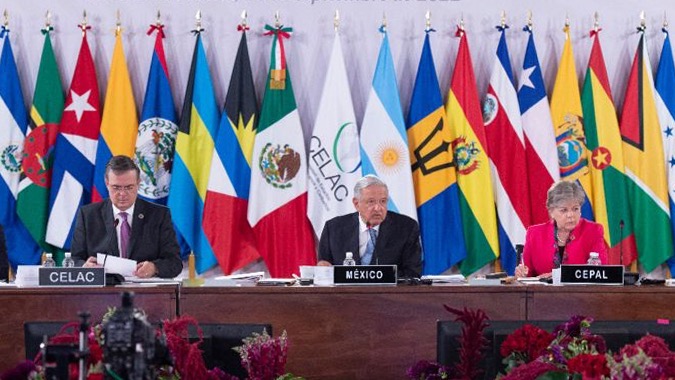South American Mangroves: Guardians of Coastal Resilience Against Climate Change

Updated at: 2025-05-13 13:03:10 (7 months ago by Melkisedeck Leon Shine)
Mangrove Ecosystems in South America: Coastal Resilience and Climate Change Mitigation
South America's extensive mangrove forests are critical for coastal protection and resilience against escalating climate change impacts. These unique ecosystems, however, face increasing anthropogenic pressures and the accelerating effects of climate change. Understanding their ecological significance and implementing effective conservation strategies are paramount for the future of South American coastal communities. This analysis will explore the vital role of mangrove ecosystems, the threats posed by climate change, effective conservation strategies, successful initiatives, and a call for collaborative action. Key concepts such as ecosystem services, resilience theory, and the common pool resource (CPR) dilemma will be applied throughout the discussion.
Ecosystem Services Provided by Mangrove Forests: A Critical Analysis
Mangrove ecosystems provide a multitude of invaluable ecosystem services. Their intricate root systems function as natural coastal defenses, mitigating wave erosion and attenuating storm surges, thereby reducing the risk of coastal flooding and infrastructure damage. This aligns with the concept of natural capital, where ecosystems provide goods and services essential for human well-being. Furthermore, these ecosystems offer exceptional biodiversity support, serving as crucial nurseries and habitats for a vast array of species, thus underpinning healthy fisheries and contributing significantly to regional ecological integrity. This biodiversity supports economic activities such as fishing and tourism. Importantly, mangroves are highly effective carbon sinks, sequestering substantial atmospheric CO2 – a critical function within the global carbon cycle and climate change mitigation efforts. This carbon sequestration capability contributes to climate regulation and can be understood through the lens of ecosystem-based adaptation (EbA).
Climate Change Impacts and the Vulnerability of South American Coastal Regions
The escalating impacts of climate change pose significant threats to South American coastlines and their delicate mangrove ecosystems. Rising sea levels, driven by thermal expansion and glacial melt, contribute to coastal inundation and erosion. The increased intensity and frequency of extreme weather events, such as hurricanes and storm surges, further exacerbate coastal erosion and flooding. These climate change impacts can be analyzed using vulnerability assessment frameworks, highlighting the interconnectedness of environmental, social, and economic factors. The situation is compounded by anthropogenic pressures such as deforestation for aquaculture or agriculture, pollution from agricultural runoff and industrial discharge, and unsustainable coastal development. These combined stressors increase the vulnerability of coastal communities and ecosystems, threatening livelihoods and ecological integrity. The resilience of these ecosystems is challenged by the cumulative impact of these stresses, as described by the Pressure-State-Response (PSR) model. Understanding the relative weight of these pressures is key for effective management and mitigation strategies.
Effective Mangrove Conservation Strategies: A Collaborative Approach
Effective mangrove conservation is not solely an environmental imperative but is crucial for the social and economic well-being of coastal communities. A multi-faceted, collaborative approach is vital, involving governments, local communities, and international organizations. This approach should focus on integrating conservation efforts with local development plans. Successful strategies require the implementation of stringent regulations to control unsustainable coastal development, prohibit destructive resource extraction (e.g., overfishing), and mitigate pollution. The application of the "commons dilemma" framework highlights the need for collaborative governance mechanisms and community engagement to manage these shared resources sustainably. Sustainable fishing practices, supported by effective fisheries management frameworks, are crucial for the long-term health of mangrove ecosystems and the communities reliant on them. Community-based conservation, emphasizing participatory approaches and empowering local stakeholders, is pivotal in ensuring the long-term success of these initiatives. By fostering a sense of ownership, such programs promote sustainable practices, aligning with principles of social-ecological systems theory.
Case Studies of Successful Mangrove Conservation Initiatives
Several successful mangrove restoration and conservation projects in South America showcase the potential for positive change. In Brazil’s Baixada Maranhense, large-scale restoration initiatives have not only revitalized degraded areas but have also generated significant economic opportunities for local communities via sustainable tourism and fisheries management. Similarly, in Colombia’s Gulf of Morrosquillo, concerted conservation efforts have shielded the coastline from erosion, improved water quality, and boosted tourism revenue, illustrating the significant economic benefits of mangrove protection. These successful examples underscore the importance of integrated approaches that combine ecological restoration with socioeconomic development, exemplifying the application of integrated coastal zone management principles.
Conclusions and Recommendations
The protection and restoration of South America's mangrove ecosystems are paramount for building resilient coastal communities capable of adapting to and mitigating the impacts of climate change. A multi-sectoral approach involving policymakers, researchers, and local communities is necessary for effective conservation. Recommendations include implementing robust environmental regulations, promoting sustainable development practices in coastal areas, investing in community-based conservation programs, and strengthening regional cooperation initiatives. Further research should focus on developing refined vulnerability assessments tailored to specific coastal regions, exploring innovative financing mechanisms for mangrove conservation, and evaluating the effectiveness of different conservation strategies in diverse ecological and socio-economic contexts. The economic valuation of mangrove ecosystem services can inform policy decisions and demonstrate the value of these ecosystems to stakeholders. The long-term success of mangrove conservation depends on an integrated approach that prioritizes both ecological integrity and the well-being of coastal communities. The applicability of these findings extends globally, highlighting the importance of mangrove conservation in mitigating climate change impacts and fostering sustainable coastal development worldwide.
Reader Pool: Considering the interconnectedness of climate change, coastal resilience, and mangrove ecosystem services, what additional policy measures do you believe are essential for ensuring the long-term sustainability of South American mangrove forests?



